The ultimate buddy system at the West Antarctic Divide Sheet
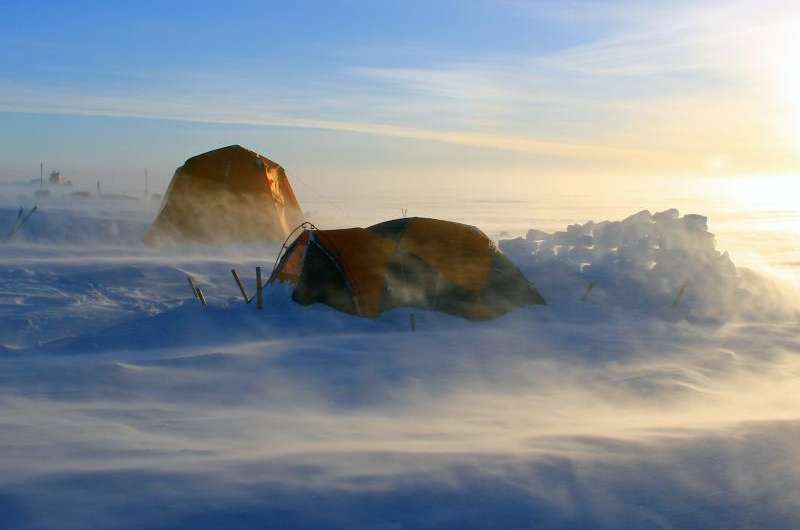
Where does a glaciologist find a best buddy? At scientific ice camp in Antarctica!
Ice scientists Ludovic Brucker and Clément Miège met in 2007 while students at the University of Grenoble's Laboratory of Glaciology and Geophysics of the Environment in France. Their meeting was brief. Brucker was on his way to Canada for the International Polar Year, a scientific program focused on the study of Earth's Arctic and Antarctic regions.
In 2011 Miège's adviser at the University of Utah had a project in Antarctica and a colleague at NASA's Goddard Space Flight Center in Greenbelt, Maryland, who was also on the project. He invited Brucker to join them in a scientific traverse in west Antarctica. Brucker didn't remember Miège, but Miège remembered Brucker.
Both are from the French Alps. Brucker grew up in the mountains in Chamonix, and Miège is from Thonon-les-Bains, near Lac Léman. Brucker is now a glaciologist at Goddard. Miège, a former NASA Earth and space science doctoral fellow, is now an NSF-sponsored post-doctoral researcher in glaciology at the University of Utah.
In September 2011, both went to the University of Kansas' Center for Remote Sensing of Ice Sheets (CReSIS) for training in operating surface-based radars to study snow and ice properties. Two months later, they were part of a team of five deployed to Antarctica.
They flew to McMurdo Station, Ross Island, home to up to 1,100 people in the summer peak season, to gather gear, food, tents and sleeping bags. While at McMurdo, they also attended the two-day Happy Camper School to learn about snow and ice safety and how to work the stove. They spent Thanksgiving at McMurdo, running a Turkey trot race and enjoying a traditional Thanksgiving meal.
It was the last feast they ate before going out on the ice.
In Antarctica's remote field locations, the number of people on a team to conduct fieldwork depends on the scientific objective. For example, while drilling at the West Antarctic Divide Sheet (WAIS) camp, a team of 20 to 30 people was needed to achieve scientific goals. The WAIS camp included scientists, ice-core drillers, a cook, a nurse, a camp manager and various logistics people to take care of the ice cores, camp, cargo and gear. In contrast, the traverse expedition that included Brucker and Miège only had a team of five people to do shallow coring and collecting radar data between the cores. A small team has the advantage of being able to move faster across the ice sheet using snowmobiles.
"The total number of people on the team reflects safety reasons and makes our work more efficient and less costly," Brucker said. "Some of us can focus on the science others can take care of camp, cooking and our safety."
In 2011, Brucker, Miège and their team traveled about 400 miles on the West Antarctic ice sheet during a three-week field study. The two operated the radars while the other three extracted ice cores.
"The idea of our traverse was to be lightweight, fast but still safe," Miège said. "Less people means less gear and a shorter duration, so the study is less expensive. We changed camps every other day so we can extract firn cores in many different places." Firn is buried snow older than a year, which slowly transitions to ice at depth.
Their scientific objective was to measure the amount of annual snowfall for the last 30 years. The radar data probes the snow to show the thickness of each year's snowfall. To validate the annual layers observed in the radar data, they drilled into the snow to extract a core that was shipped back to the U.S. for dating. The ice core is almost like a tree trunk with annual rings of different widths, youngest at the surface and older at the center. With ice cores, the deeper the drilling, the older the ice.
Brucker and Miège became a two-man radar team. The radar was in a big box sitting on a triangular sled dragged behind a snowmobile. One drove the snowmobile while the other was on the sled monitoring the radar. The snowmobile had a heated handlebar, a screen protecting the driver from the wind and a cushy seat. In contrast, the person on the sled was exposed to winds and the setup was less comfortable. To have enough dexterity to operate the radar computer, the operator could only wear a single thin pair of gloves. The two regularly switched places.
"What does a person wear to keep warm in Antarctica?" Brucker asked. "Everything he can."
"But the trick is still being able to move," said Miège.
Not for the fashion-conscious, Antarctica gives layering new meaning. Start with two pairs of wool thermal underwear, top and bottom. Add one or two pairs of wool socks. Put on fleece pants and a fleece jacket. Top with a big down parka and a heavy-duty, insulated bib. Don't forget boot liners under mid-calf-high boots with thick rubber soles to give several more layers of insulation and two pairs of wool gloves. Remove the outer gloves when typing on the computer or working with the radar. Complete with balaclava leaving only eyes exposed behind goggles.
The tents are nylon; the sleeping bags are down. The two scientists used hot water bottles with water they warmed on the stove in the kitchen tent. There is no such thing as Antarctic pajamas; everyone remains at least partly dressed inside the sleeping bags.
Cooking is a production. Cooking is done inside the tent while exposing a small hole for ventilation. It is generally too windy and cold to cook outside.
"What do you eat in Antarctica?" asked Brucker. "Frozen food."
"We mainly ate beans, rice, pasta, soups, cheese and some premade meals, such as macaroni and cheese and dehydrated meals," said Miège. "For Christmas, we splurged on scallops with quinoa."
"And one of our team members brought a tiny plastic Christmas tree, which we decorated with small ornaments," added Brucker.
Ice scientists do not have time to play in the snow. They do not have snowball fights. They do not build snowmen–or even snow scientists. But they do build snow forts to protect themselves from the strong wind.
Their bond started during this trip. They spent a lot of time together taking observations with the radar. They left before the others because they traveled so much more slowly to collect precise radar data. Often, they left shortly after breakfast leaving as the others broke camp. Their days were long and they were always helping each other.
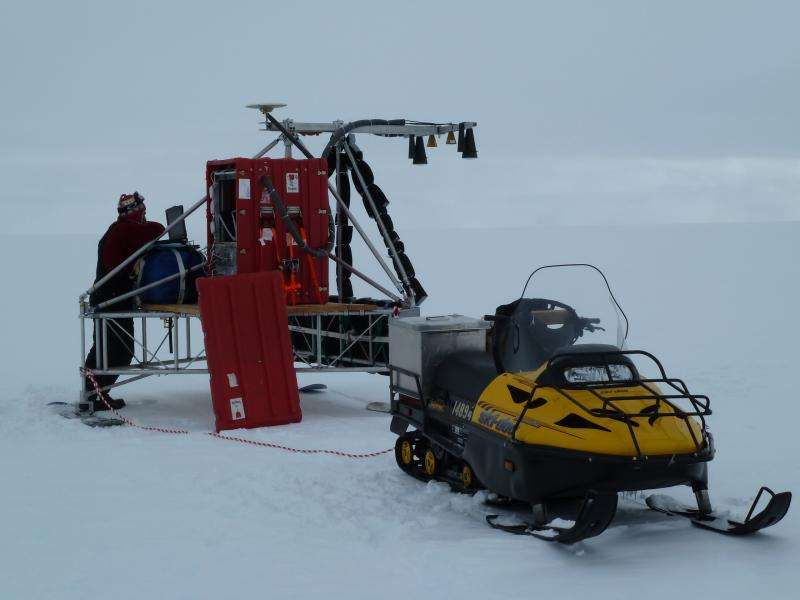
"We speak French together," said Miège.
"Although, we have slightly different accents because I grew up in the mountains and Clem grew up in the valley," added Brucker.
"Coming from the same French mountain culture made us think in similar ways," said Miège.
"We both understand snow, mountains and cheese," said Brucker. "Because our cultures are similar, we even have similar body language, which is important when you have to think and act quickly while wearing a lot of cold-weather clothing limiting movement and gestures."
"In Antarctica, we started to be able to know what each other was thinking without speaking," said Miège. "We didn't necessarily realize it. This is important when you're in deep field deployments in polar regions. But as a rule, you always need to speak up if anything appears to be different than normal, this is critical for our team safety."
The pair made two NASA and National Science Foundation-sponsored field trips to Greenland, one in 2013 as part of another team of five and a second in 2014 with, unexpectedly, just the two of them.
In April 2013, the two spent springtime in Greenland. They needed to go before the melting season began for the radar to function well. Instead of a traverse, they set up a camp and had a helicopter drop their gear and equipment, which made for an easier trip. The total trip was about a month, but they only spent nine days on the ice sheet.
The weather is not always cooperative in the southeast corner of Greenland. They waited about 10 days for the weather to allow their helicopter flight to their field site.
Unlike Antarctica, they used skis instead of snowmobiles, dragging their radar and GPS behind them. At about 6,000 feet of elevation, movement was physically demanding.
Their GPS, about the size of a shoebox, is accurate to a matter of inches and allows precise positioning of the radar data. A GPS is also critical because there are no visual landmarks, like flying through clouds without a visual horizon reference. In some cases, the GPS allows them to return safely to their camp if the weather unexpectedly worsens, lowering visibility.
Some of the biggest dangers are windburn, frostbite and sunburn especially because of the reflection from the snow. To prevent these dangers, each had to vigilantly monitor the other's condition.
In extreme cold, rechargeable batteries are a lifeline. Batteries can operate, but only for a limited time per charge, and they must be kept warm. Battery energy must be strictly conserved. Although the gas generator can recharge them, the generator can often not be used during bad weather. Often warming batteries with body heat is sufficient to keep power without recharging them for a few days.
"We each kept two satellite phone batteries on us at all times including at night in the sleeping bags," said Brucker. "We can't let them get cold at all."
When doing fieldwork in such isolating conditions, the crew must take measures to keep their minds occupied. This is especially true when the team had to retreat to their tent during a raging blizzard.
"You need to keep your mind busy," said Miège. "It gets really lonely. So we played French card games and kwirle, a form of dominos. We also read books and entertained each other with stories and jokes."
Miège read a book about the Grand Canyon's earliest exploration, to keep his mind "warm," another book about Iceland and also "The Girl with the Dragon Tattoo." Brucker read his fiancée's favorite books.
On their way back home, they had a layover in Iceland and enjoyed warming up in the thermal hot springs.
In April 2014, they returned to the same location in Greenland on another joint NASA and NSF project. They bought food from U.S. supermarkets, which they shipped to Greenland. They took a lot of comfort food on the theory that if you don't eat well for a few weeks, then you don't think well. Their culinary highlight was a box of fondue and two "saucisson," French dry-cured sausages that do not need refrigeration, packed by Brucker's mother.
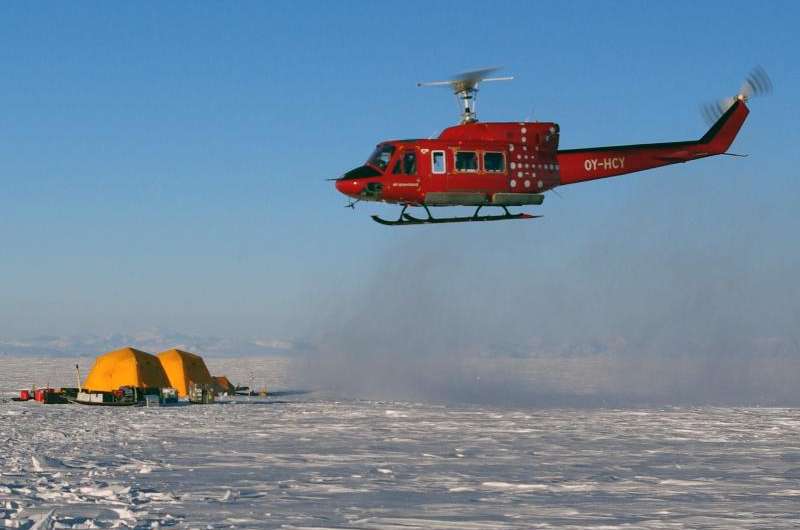
Both Brucker and Miège are excellent French cooks. Americans never complain about being with them for a meal.
This venture had originally included three people, but due to a three-week weather delay, the third dropped out. The weather was not the best; it remained unstable throughout.
After several days of discussion and consultation with superiors and the project manager, they decided to become a team of two braving Greenland.
Then their worst fears were realized. A serious storm hit. Hard. It was dark. Sixty mph winds. Blowing snow. White out conditions.
They were scared.
"Being in that storm was like sitting on a tent placed on the roof of a car driving 75 mph with blowing snow," said Brucker. "We trust each other absolutely. It's amazing how much you learn when it is just two on the ice."
"It was the first time I really felt we were in danger," said Miège. "The closest helicopter was 75 miles away, but couldn't fly in the storm anyway. We had to know what to do. We had to stay calm."
Usually, they put on earplugs or listened to music to block out the wind, which can be loud. But since this storm was stronger than normal, they stopped the music. They wanted to hear any unusual noises so that they could react faster as needed.
The storm lasted 18 hours with winds, they later learned, up to 75 mph.
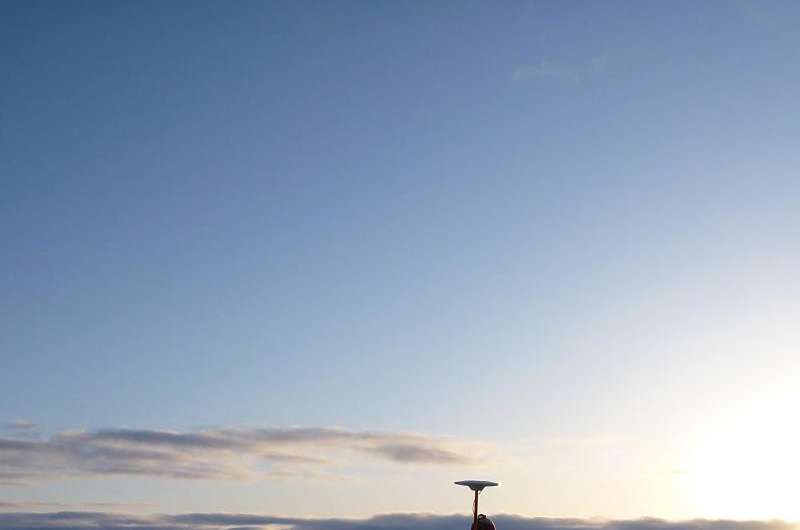
"As the wind increased, we were already in the tent, but had to go out to check the cargo and equipment, make sure everything was secured" said Miège. "I knew we could do the check in two minutes. I couldn't have done this with anyone except Ludo. I knew that he was strong enough, physically and emotionally, to cope."
They further secured their gear and then got crawled back inside the tent. The wind was so loud even inside the tent that they had to yell back and forth. Their tents, one for sleeping and another for cooking and equipment, were secured with anchors and ropes. The biggest danger was that their tents might collapse. If so, they would have to dig a trench in the snow to survive.
It was the ultimate buddy system.
Although the wind made tremendous noise, they began hearing a slightly different noise. That sound turned out to be the anchors creaking in the snow. In the morning, they discovered that, despite anchors, their tent had slightly rotated.
After that trip, they planned to vacation together with their brothers in Iceland. Because of the weather delays, their brothers went on vacation without them.
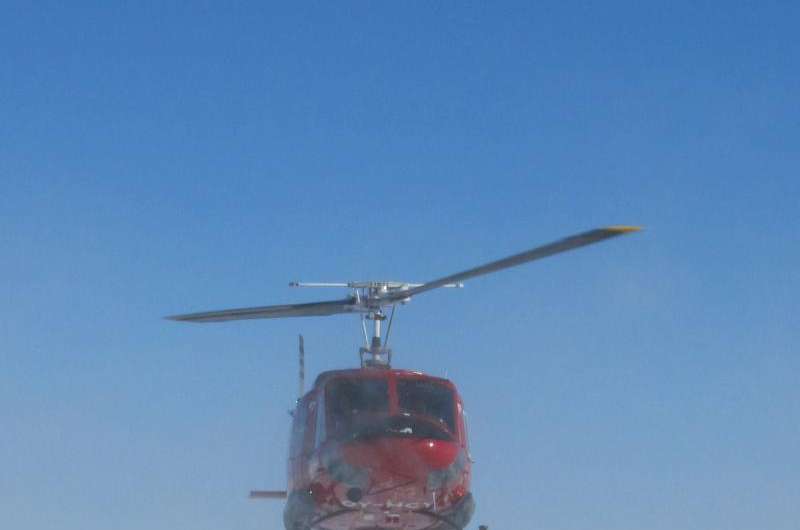
Miège's next fieldwork will in Greenland from July 20, 2015, to Aug. 18, 2015. Brucker, however, will be otherwise occupied preparing for his wedding at the end of August in France's Loire Valley to a French-American epidemiologist who conducts field work every year in Africa, which offers the opposite temperature extreme challenges.
During the interview for this story, Brucker asked Miège to be his best man, to which he happily agreed. Miège's girlfriend is a glaciologist too; he met her on his November 2010 field trip to Antarctica.
"You never know the length of a field trip," said Brucker. "You know when you're leaving, but you never know when you'll come back."
Miège will move heaven and Earth—and snow and ice—to find a way to return back in time to be best man at his best buddy's wedding. That's how the buddy system works.
Provided by NASA




















